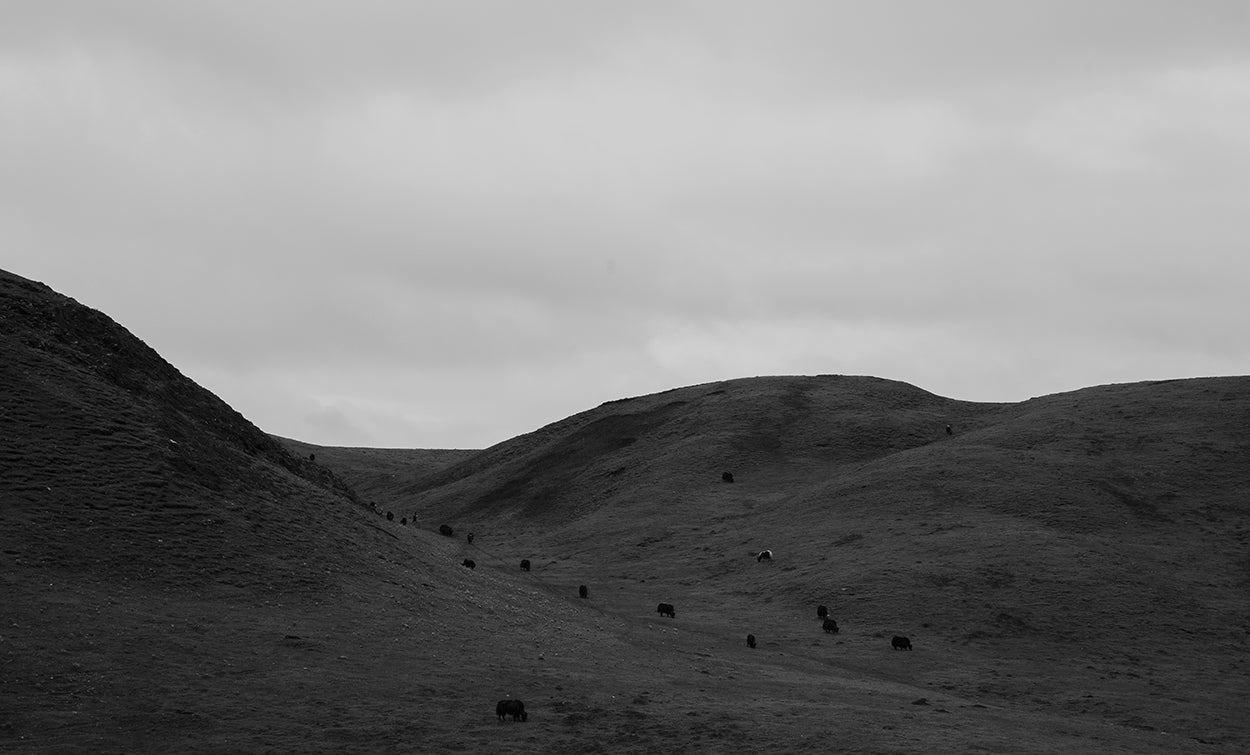SOGWA - INTERVIEW WITH A NOMAD COUPLE
Each year, nomads move their herds to higher pastures for winter grazing in a period called Sogwa by the nomads of Ritoma. Moving towards new grounds with their sheep and yak, the journey takes nomads through rolling hills ranging in altitude between 3200 meters and 4000 meters above sea level, before arriving at their new home for the season. To celebrate the launch of the new core blanket collection, along with the end of Sogwa, we interviewed Rinchen Dhundup, 35, and Dugmo Tsering, 34, a couple that makes up the last generation of nomads taking part in this annual tradition on the decline.


Describe ‘Sogwa’ – why do you go and what do you do?
In ritoma nomads are usually in their winter base for up to 7 months in a year. The rest of the five months their time is divided between the Spring, Summer and Fall pastures. We (Rinchen Dhundup and Dugmo Tsering) have our winter base at a lower ground than most families of Ritoma. This area does not have a lot of bushes and not many marshy areas for water. This lower ground isn’t ideal for yaks but the sheep thrive here. The yaks are often roaming towards higher ground so they are difficult to herd during the long winter months. For this reason we choose to go to higher pastures for more ideal winter grazing for our yaks.

When will you go on Sogwa?
This year we left on the 22nd of January this year. Some years we leave following the Lunar New Year in March.
How long does your Journey take?
The journey is not long and we can get there within 3 hours when driving our animals. The altitude starts getting higher at about 3800 mtrs above sea level.
How long are you gone?
This year we will be away till the 16th of May. That is the day that the villagers have decided together as the end of the Sogwa period. Usually we spend almost 5 months in Sogwa
How do you spend your days?
We enjoy our time at Sogwa. It is very cold but the animals are easy to herd as we take them to places they enjoy being. The only chore we have is when we need dung to burn fuel and then we will keep them in makeshift fenced areas for the morning and collect the dung once the animals have left. But most days we take them to a warmer valley and the animals remain grazing there. On those days they are content, so easy to herd and there are no extra chores. In the afternoons we need to make sure that the animals get driven to a water hole. Most water sources are frozen so this is something we need to make sure is done. There is lots of down time where we can stay in our tents and cook.


What are some of the challenges during the time?
In the old days one had to be very cautious of thieves but nowadays that is no longer a worry. We do need to watch out for wolves. As spring arrives and snow and ice start to melt, we need to make sure to watch the animals in the swamps. The older animals sometimes get stuck and without help can break their bones or be left out there overnight. We also have to watch the female yaks who start their birthing as little 'weekos' (baby yaks) born in the swampy areas can get stuck there. The cold weather which can fall into -20 degrees is a challenge too. How do you keep yourselves entertained? What are some of the joy or highlights
Since the animals are usually content, we can let them roam without worrying about them going too far away. This gives us time to meet up with old friends and cook together in our tents until it is time to herd the animals for water or bring them home. There are very few chores since we don’t milk the animals in the winter and only collect the dung on a needed basis. Some days we go high up on hills where there is phone reception and then connect with our friends in the village or go through social media. This is also a time to catch up on our prostrations and prayers.

